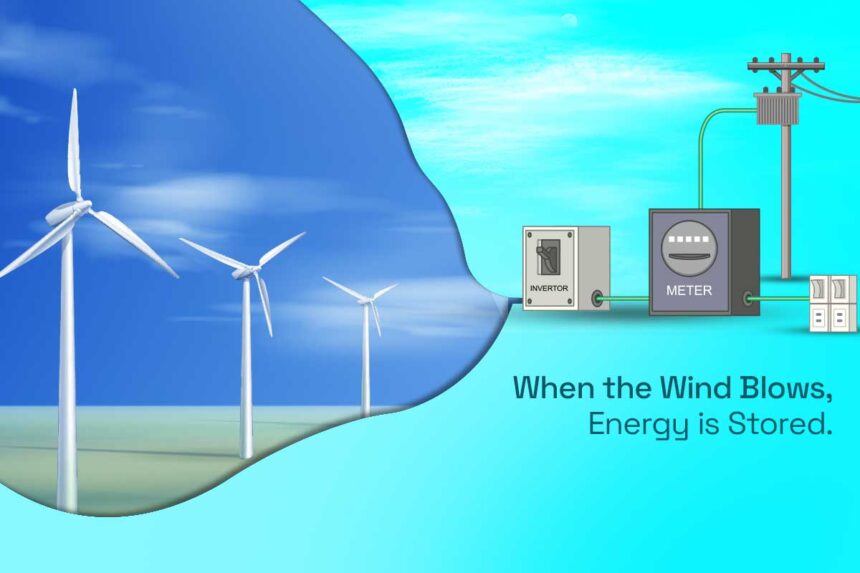When the kinetic energy of air in motion is converted into electricity, it is known as wind energy. Wind energy has gained significance due to the fact that it is a renewable form of energy. Renewable energy simply means energy that will not extinguish and can be generated according to the requirements based on the consumption of energy. The wind rotates the rotor blade of modern wind turbines, therefore converting the kinetic energy into rotational energy. The rotational energy then gets transferred into the generator by the shaft, thus producing electric energy.
Due to the research and development around wind energy, the supportive policies that encourage this type of renewable energy, and the falling costs that are advantageous to the growth prospects of wind energy, wind energy has been growing rapidly since the 2000s. Taking a leap from 7.5 GW in 1997 to some 733 GW by 2018, according to IRENA’s data, the onshore and offshore global installed wind energy generation capacity has increased by 98 percent in the past two decades. Offshore wind energy generation showed more proportionate growth as compared to onshore wind generation. A rise by factor 5.2 has shown an increase in the production of wind power between 2009 and 2019 to reach 1412 TWh.
Therefore, data and statistics prove that there has been a favourable response towards wind energy and that there has been a noticeable increase in wind energy production over the years as the technology gained more acceptance and awareness amongst people and society. The constant supportive measures towards wind energy can be contributed to the kind of advantages that the wind energy production and wind energy has to offer to humankind and the environment. Some of the major merits of wind energy are explained.
Wind power creates good-paying jobs, therefore increasing employment rates. Currently, in the United States of America, across all 50 states, there are 120,000 people working in the wind power industry. By 2050, the wind energy industry has the potential to support hundreds of thousands of jobs, ranging from blade fabricators to asset managers. Investments in the wind power industry are boosting the economies of many countries. Additionally, wind energy is contributing to considerable amounts of energy consumption across multiple nations. Since wind is an inexhaustible and abundant natural element and energy is created by converting kinetic energy into usable energy, wind energy is a clean and renewable form of energy. Wind energy helps us create electricity without burning any fuel or creating pollution that degrades the environment. Therefore, wind energy generation is a nature-integrative and environmentally friendly form of energy production.
Wind power helps with local tax payments and land lease payments. Communities that develop wind energy can use the revenue to improve the local infrastructure, reduce the tax burden, and cater to the socio-economic needs of the community, leading to an uplift in the standard of living for those people. Land-based and utility-scale wind turbines provide affordable energy because of their low prices. Wind energy is one of the most cost-effective ways of producing and consuming energy. With the advancement in technologies associated with wind power generation, the prices of wind energy are only going to get more favourable for all sections of society, irrespective of their economic backgrounds. Additionally, wind turbines work well in rural, remote, and multi-use working landscapes.
However, there are certain challenges to wind power. Wind power must compete with other cost-effective ways of energy generation. The ideal wind sites are often located in remote locations that are not feasibly reachable. Installation challenges would have to be overcome, and additionally, many areas would have to be well connected in a network containing the source of wind power and the outlets for consumption. The wind turbines also produce noise, which might add to the problem of noise pollution. Last but not least, wind turbines can impact local wildlife. Even though the rate of negative impact wind energy production can have on wildlife is low, the goal is to reduce the interaction between wildlife and wind to negligible amounts to avoid harm.
Therefore, using wind energy generation as a counteractive way of producing electricity and relying on renewable forms of energy is highly favorable.







